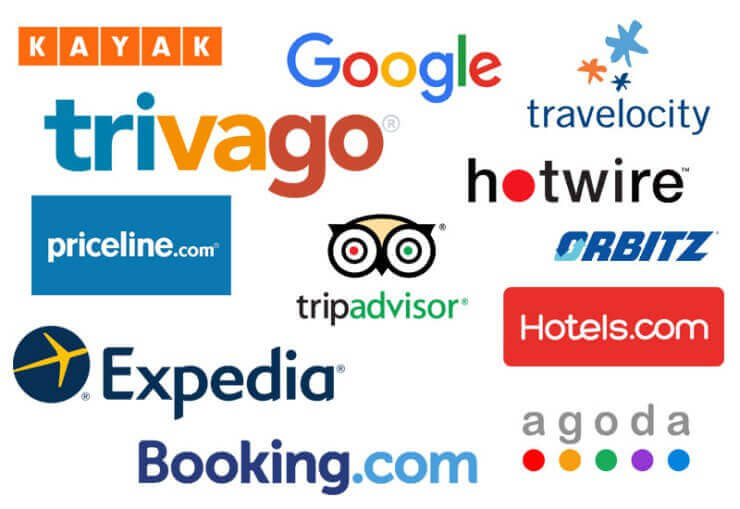Having a strong multichannel marketing strategy is important to capture travelers all the way throughout the path to purchase, from dreaming to booking.
NB: This is an article from Sojern
Inspire them to learn more about you when they’re dreaming and scrolling on Facebook, search engine marketing (SEM), video, or display. Then, as travelers narrow down their trip dates and are in the planning and booking stages, your metasearch ads influence them to book directly with you. It is why we recommend all hoteliers consider adding this channel to their marketing strategy, so they are top of mind and their hotel ads are displayed when the traveler is ready to book.
Subscribe to our weekly newsletter and stay up to date
In fact, metasearch is arguably one of the most important channels for hotel marketers – 2 out of 3 independent hotels receive direct bookings from metasearch engines. 75% of travelers are believed to use metasearch engines in their search process.
So what is metasearch?
Metasearch is a marketing or acquisition channel that drives qualified traffic to your website. Think of sites like Trivago, Kayak, Tripadvisor, and Google Hotel Ads. A metasearch engine gathers results from several other search engines and produces its own combined results list. For a traveler, they function as a rate comparison platform, allowing them to view an aggregated list of hotel room rates. Travelers can quickly see room availability, as well as the rates offered on different platforms, all in one place.
Metasearch often gets confused with OTAs like Expedia, Orbitz, and Booking.com. The key to knowing the difference is who owns the customer relationship. With metasearch, a direct booking is driven to your website and you own the relationship. With an OTA, the transaction is happening on their website, and they’ll handle all cancellations and modifications, and you lose the chance to upsell and engage directly. Additionally, it becomes difficult to manage customer expectations, which can lead to misguided experiences when they arrive at your hotel.
There are plenty of metasearch sites to choose from, and they vary in specialization. TripAdvisor and Trivago, for example, focus on hotels, while Kayak, Wego, and Skyscanner’s core products are flights. A vendor like Sojern helps travel marketers advertise across seven different metasearch sites because each of them has their own pricing, ranking, and bidding logic. Most of the metasearch publishers are managed on a Cost-Per-Click (CPC) basis, but other models emerged in 2020, such as commission per booking and commission per stay. Needless to say, there are many options and a lot to think about when running metasearch on your own, which is why many hoteliers choose a trusted partner.

How Metasearch Works
Once you’re up and running on the necessary metasearch sites, the booking process is simple for the traveler.
- A traveler searches for a room on a metasearch website
- Rates and availability are passed back from the booking engine so accurate pricing can be displayed
- Sojern bids on behalf of your hotel so the traveler clicks on your property’s listing
- The traveler books directly on your website
Example of the Anatomy of a Search Ad

4 Best Practices for Metasearch
1. Define your goals and budget. The example below is a good guideline, but keep in mind that if your hotel isn’t receiving a fair share of direct bookings before implementing metasearch, this number can be higher.
 2. Rate parity is a key success factor. It’s important to note that rates are pulled dynamically from a different source of inventory and adapted to the user’s location (taxes, currency). This is why rate parity–maintaining a consistent rate across all distribution channels–is crucial for hoteliers. Whatever rates you are sending to the OTAs must be updated everywhere to ensure success.
2. Rate parity is a key success factor. It’s important to note that rates are pulled dynamically from a different source of inventory and adapted to the user’s location (taxes, currency). This is why rate parity–maintaining a consistent rate across all distribution channels–is crucial for hoteliers. Whatever rates you are sending to the OTAs must be updated everywhere to ensure success.
3. Display your best rate first. Display the Best Available Rate (BAR) within the first two results on your webpage and prevent a potential booker from having to scroll for it. While it’s tempting to drive them to your most expensive room rates, the experience is better when they are driven to the same rate you are advertising on metasearch.
4. Be visible on Google Maps and search. Google My Business helps you manage all that important information your guests are looking for like location, phone numbers, loyalty offerings, amenity details, and reviews. The more visible you are, the more brand awareness you’re getting.





